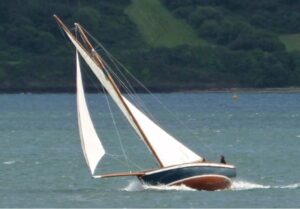BrainBlog for vFunction by Eric Newcomer (Guest Author – CTO and Principal Analyst, Intellyx)
Introduction
You have picked a new destination for your applications that will bring efficiency, ease of maintenance, and upgraded technology, but you are finding that you have to continuously tack due to headwinds such as:
- Budget shortages
- Required upgrades
- Safety and security patches
- Priority maintenance and enhancement requests
- Conflicting business priorities
- New applications for new revenue streams, or new customer acquisitions.
You can’t get where you want to go in a direct, straight line because of all the conflicting interests and priorities for application maintenance, enhancement, and replacement.
It is not at all clear how you will achieve your goals of modernization, paying down technical debt, and addressing architectural debt, despite the clear business value of doing so.
The first thing to do is identify a target state to codify the strategic business value of the modernization program. The target describes the future state of the IT systems post modernization and ties it to strategic business value such as increased revenue, improved cost efficiency, or supporting the launch of a new product.
If you’re sailing a boat, your target would be a landmark on the other side of the river. If reaching your target means you are sailing into the wind (i.e., you have headwinds), the only way to make progress is to tack across the wind from side to side and make progress incrementally.
Of course you want to be sure that you don’t drift off course, especially not over the cliff, as my colleague Jason English warned about in the previous blog post in this series.
An IT practice called “Managed Evolution”1 describes in detail how to continuously make progress toward the business value achieved through modernization.

As shown in Figure 1, the central principle of managed evolution is to evaluate each proposed modification to the system in the context of whether or not it helps you to move you closer to the desired system state. The framework allows you to assess the incremental business value of doing so, and therefore help decide whether investments are strategic or not.
It is of course impossible to align every modification to achieving the target, resulting in the zig-zag journey shown in the diagram. It’s like sailing into the wind – you can see your destination, but you can’t head straight toward it. You have to make progress sideways and incrementally.
Read the entire BrainBlog here.



